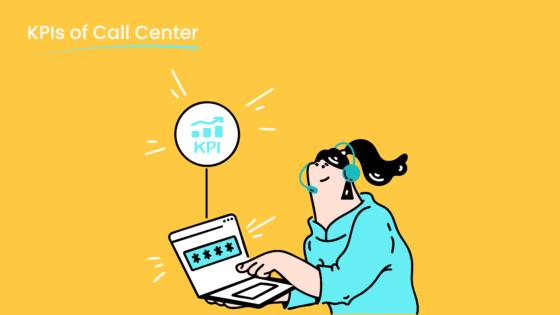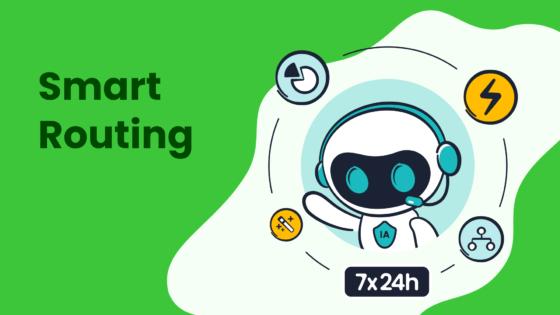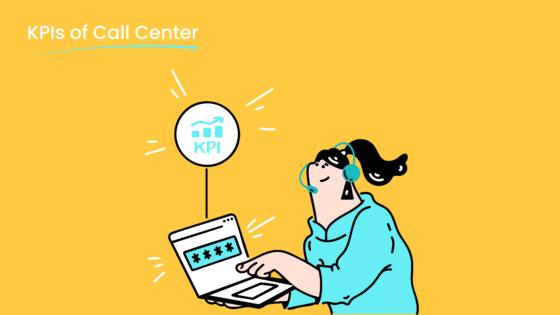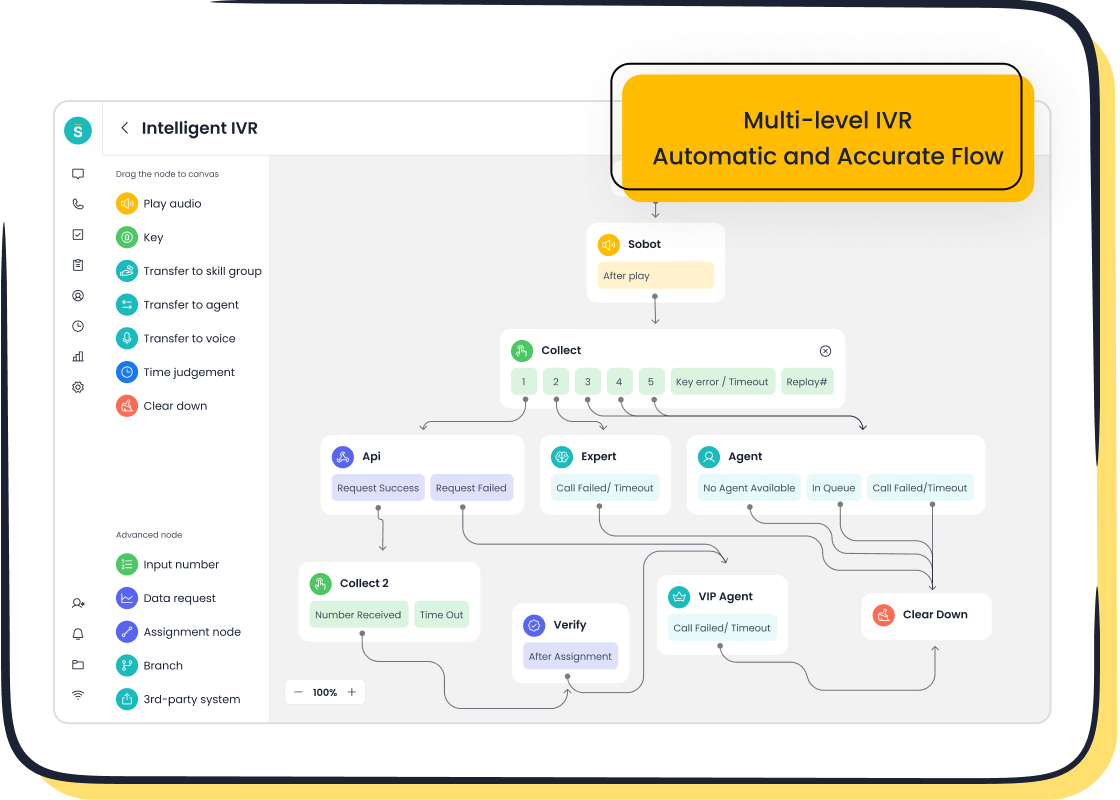What is Average After-Call Work Time in Call Centers

Average After-Call Work Time (AACW) refers to the time agents spend completing tasks after a customer interaction. These tasks include updating records, documenting call details, or scheduling follow-ups. On average, agents take about 6 minutes for these activities, which aligns with the World Bank Group's recommendation for an ideal wrap-up duration. Efficient AACW management directly impacts call center performance by reducing agent idle time and improving customer satisfaction. Historical data trends show that analyzing past call data helps predict peak times, enabling better staffing and shorter wait times. Tools like Sobot's Voice/Call Center simplify tracking AACW, ensuring agents focus on delivering exceptional service.
Understanding Average After-Call Work Time (AACW)

What is AACW?
Average After-Call Work Time (AACW) measures the time agents spend on after-call tasks once a customer interaction ends. These tasks include documenting call details, updating customer records, and scheduling follow-ups. AACW is a critical metric in call center operations because it directly impacts efficiency and customer satisfaction.
To better understand AACW, consider the following table:
| Metric | Description |
|---|---|
| ACW | Average time spent on after-call tasks per call. |
| Total time spent on after-call tasks | Includes all activities performed by agents after concluding a call, such as updating records, entering notes, and scheduling follow-up actions. |
| Total number of calls handled | Refers to all calls managed by agents during the specified period for which ACW is calculated. |
Efficient management of AACW ensures agents can handle more calls without compromising quality. Tools like Sobot's Voice/Call Center help track and optimize this metric, enabling agents to focus on delivering better service.
Common After Call Work (ACW) Tasks
Documenting call details
Agents often record key points from the conversation, such as the issue discussed and the resolution provided. This documentation ensures accurate records for future reference and helps maintain service quality.
Updating customer records
Agents update customer profiles with new information, such as changes in contact details or preferences. This step ensures the database remains accurate and supports personalized service in future interactions.
Scheduling follow-ups or escalations
Sometimes, issues require further action. Agents schedule follow-ups or escalate cases to specialized teams. This ensures timely resolution and enhances customer satisfaction.
Why Wrap-Up Time Matters in Call Centers
Wrap-up time plays a vital role in call center efficiency. Reducing after call work to 10% of the average handling time can save $3 per call. For a call center managing 52,000 calls annually, this translates to $150,000 in savings. Efficient wrap-up times also improve customer satisfaction by reducing wait times and ensuring faster resolutions.
Metrics like ACW duration and error rates in post-call documentation highlight the importance of wrap-up time. Tools like Sobot's Voice/Call Center provide real-time monitoring and analytics to help call centers optimize these metrics. By streamlining post-call wrap-up processes, you can enhance both agent productivity and customer satisfaction.
Calculating Average After-Call Work Time
The Formula for Calculating AACW
To calculate average after-call work time (AACW), you divide the total time spent on after-call tasks by the total number of calls handled. This formula provides a clear picture of how much time agents spend on post call wrap-up activities.
Here’s a breakdown of the components:
| Component | Description |
|---|---|
| Total time spent on after-call tasks | Includes all activities performed by agents after concluding a call, such as updating records, entering notes, and scheduling follow-up actions. |
| Total number of calls handled | Refers to all calls managed by agents during the specified period for which you want to calculate ACW. |
By using this formula, you can identify inefficiencies and take steps to optimize wrap-up processes. Tools like Sobot's Voice/Call Center simplify this calculation by providing real-time data on ACW metrics.
Example Calculation of AACW
Let’s consider an example from a telecom call center. Suppose agents collectively spend 1,200 minutes on after-call tasks in a day and handle 300 calls during the same period. Using the formula:
AACW = Total post call wrap-up time ÷ Total number of calls handled
AACW = 1,200 minutes ÷ 300 calls
AACW = 4 minutes per call
This calculation reveals that agents spend an average of 4 minutes on ACW per call. If this exceeds the target, management can implement strategies like training or automation to reduce the time. For instance, using templates for documentation or AI-powered tools can significantly enhance productivity and improve customer satisfaction.
Tools for Tracking AACW
Sobot Voice/Call Center for Monitoring ACW

Tracking ACW manually can be challenging. Sobot's Voice/Call Center offers advanced features to monitor and analyze ACW in real time. Its unified workspace allows agents to manage calls and after-call tasks efficiently. The platform also provides detailed analytics, helping you identify bottlenecks and optimize wrap-up processes. With a 99.99% system uptime and seamless integration capabilities, Sobot ensures reliable and accurate tracking of ACW metrics. By leveraging these tools, you can enhance agent productivity and deliver better customer experiences.
The Importance of AACW in Call Centers
Impact on Call Center Efficiency
Reducing agent idle time
Efficient management of after call work reduces agent idle time significantly. When agents complete post-call activities like updating customer records or documenting call details quickly, they can move on to the next interaction without delays. This ensures that your call center operates at peak efficiency. For example, using tools like Sobot's Voice/Call Center, which offers features such as automated workflows and real-time monitoring, helps streamline post-call processing. These tools allow agents to focus on delivering quality service while minimizing downtime.
Improving overall productivity
Optimizing wrap-up times directly impacts overall productivity. Shorter post-call wrap-up time means agents handle more calls within their shifts. This not only improves the call center's throughput but also enhances the quality of service provided to customers. A recent study showed that reducing average handle time by just two minutes increased call containment rates by 60%. By leveraging advanced solutions like Sobot's AI-powered Voicebot, you can automate repetitive after-call tasks, further boosting productivity.
Influence on Customer Satisfaction
Faster resolution times
Faster post-call processing leads to quicker resolutions for customers. When agents spend less time on after-call tasks, they can address more inquiries promptly. This reduces wait times and ensures that customers receive timely support. For instance, a 30% reduction in misrouted calls, achieved through smart call routing, significantly improves resolution times.
Enhanced customer experience
Efficient wrap-up processes enhance the overall customer experience. Accurate documentation and updated records ensure that future interactions are seamless. Customers appreciate when agents have all the necessary information at their fingertips. Tools like Sobot's unified workspace simplify this process, enabling agents to deliver personalized and efficient service.
Role in Workforce Management and Planning
Average after-call work time plays a crucial role in workforce management. By analyzing post-call wrap-up time data, you can predict staffing needs and allocate resources effectively. For example, if post-call activities take longer during peak hours, you can schedule additional agents to maintain efficiency. Real-time analytics from platforms like Sobot's Voice/Call Center provide actionable insights, helping you plan better and improve overall operational efficiency.
Factors Influencing Average After-Call Work Time
Complexity of Customer Interactions
The complexity of customer interactions significantly affects average after-call work time (AACW). When customers present intricate issues, agents often spend more time on after-call tasks. For example, resolving technical problems or handling escalations may require detailed documentation and follow-ups. These activities extend post-call wrap-up time, impacting overall productivity. Simplifying processes and providing agents with clear guidelines can help reduce the time spent on post-call activities. Additionally, tools like Sobot's Voice/Call Center offer features such as automated workflows, which streamline post-call processing and improve efficiency.
Agent Training and Skill Levels
An agent's training and skill level directly influence how quickly they complete after call work. Well-trained agents handle post-call activities more efficiently, ensuring accurate documentation and timely follow-ups. Training programs that focus on time management and tool usage can significantly enhance performance. For instance, teaching agents to use templates for documentation reduces errors and speeds up post-call wrap-up time. Regular feedback and performance monitoring also help agents refine their skills, leading to better quality and faster post-call processing.
Availability of Technology and Tools
The availability of advanced technology and tools plays a crucial role in optimizing ACW. Automated systems, such as AI-powered solutions, simplify after-call tasks by generating call summaries and updating records automatically. This reduces the need for manual input, saving time and improving accuracy. For example, automated call transcripts ensure that agents focus on customer interactions rather than extensive documentation.

How Sobot Voice/Call Center Enhances Efficiency
Sobot's Voice/Call Center provides cutting-edge tools to enhance efficiency in post-call activities. Its AI-powered Voicebot generates concise call summaries, reducing post-call wrap-up time. The unified workspace allows agents to manage calls and after-call tasks seamlessly, improving productivity. With features like real-time monitoring and smart call routing, Sobot ensures that agents spend less time on repetitive tasks and more time delivering quality support. These capabilities not only optimize ACW but also enhance customer satisfaction by ensuring faster resolutions.
Call Center Policies and Processes
Call center policies and processes shape how efficiently agents complete after-call work (ACW). Clear guidelines and streamlined workflows reduce errors and improve productivity. When policies align with operational goals, agents can focus on delivering quality service while minimizing post-call wrap-up time.
Standardized Procedures for ACW
Standardized procedures help agents complete tasks faster. For example, using predefined templates for documenting call details ensures consistency and accuracy. These templates reduce the time spent on repetitive tasks, allowing agents to handle more calls. Sobot's Voice/Call Center simplifies this process by integrating templates directly into its unified workspace, enabling agents to update customer records seamlessly.
Metrics That Reflect Policy Impact
Call center policies directly influence key metrics related to ACW outcomes. The table below highlights how these metrics measure the effectiveness of policies and processes:
| Metric | Impact on ACW Outcomes |
|---|---|
| ACW Duration | Indicates efficiency of post-call processes |
| Error Rates | Reflects quality of agent performance and training |
| Resolution Times | Affects overall customer satisfaction and service quality |
| Customer Satisfaction | Directly influenced by the quality of post-call activities |
For instance, reducing ACW duration through automated workflows improves resolution times and enhances customer satisfaction. Tools like Sobot's AI-powered Voicebot automate repetitive tasks, ensuring agents spend less time on manual processes.
Continuous Policy Evaluation
Regular evaluation of call center policies ensures they remain effective. Analyzing ACW metrics helps identify bottlenecks and areas for improvement. For example, if error rates in post-call documentation increase, revising training programs or introducing new tools can address the issue. Platforms like Sobot's Voice/Call Center provide real-time analytics, enabling you to monitor performance and refine policies for better outcomes.
Strategies to Optimize AACW

Streamlining Post-Call Processes
Automate repetitive tasks

Repetitive tasks like updating customer records or summarizing calls can consume valuable time. Automating these tasks allows agents to focus on delivering high-quality service. For instance, AI-powered tools can generate call summaries or update records automatically. This reduces manual effort and ensures accuracy. Sobot's Voice/Call Center offers features like automated workflows, which streamline these processes. By automating repetitive tasks, you can improve agent performance and reduce average after-call work time.
Use templates for documentation
Templates simplify documentation by providing a structured format for agents to record call details. Predefined templates ensure consistency and reduce errors. For example, agents can use templates to log customer issues, resolutions, or follow-up actions. This not only saves time but also enhances the quality of records. Sobot's unified workspace integrates templates directly into its system, enabling agents to complete documentation efficiently. Streamlining documentation processes leads to continuous improvement in operational efficiency.
Tip: Streamlined post-call processes can lead to measurable outcomes. The table below highlights the benefits:
| Metric | Outcome Description |
|---|---|
| Cost Efficiency | Organizations achieved cost savings through optimized ACW. |
| Elevated Customer Satisfaction | Higher CSAT scores due to quicker resolutions and personalized interactions. |
| Enhanced Efficiency | Significant increase in customer service efficiency with shorter wait times. |
| Improved Agent Performance | Reduced ACW time allowed agents to handle more interactions effectively. |
Investing in Agent Training
Teach time management skills
Time management is a critical skill for agents. Training programs that focus on prioritizing tasks and managing time effectively can significantly reduce after-call work time. For example, teaching agents to categorize tasks by urgency ensures that essential activities are completed first. This approach improves productivity and enhances the customer experience. Regular performance monitoring helps identify areas where agents can improve their time management skills.
Provide training on tools and software
Agents equipped with the right skills can use tools and software more effectively. Training sessions should focus on teaching agents how to navigate systems like Sobot's Voice/Call Center. This platform offers features like smart call routing and real-time analytics, which simplify post-call tasks. When agents understand these tools, they can complete their work faster and with greater accuracy. Continuous improvement in training ensures agents stay updated on the latest technologies.
Leveraging Technology
AI and automation tools
AI and automation tools play a vital role in optimizing after-call work. These tools can handle tasks like generating call transcripts or updating customer records automatically. For example, AI-powered Voicebots can summarize conversations, allowing agents to focus on resolving issues. This reduces the time spent on manual tasks and improves overall efficiency. Leveraging technology ensures that your call center operates at peak performance.
Sobot Voice/Call Center for Smart Call Routing
Smart call routing ensures that customer inquiries reach the right agent quickly. Sobot's Voice/Call Center uses rule-based routing to direct calls based on factors like customer needs or agent expertise. This reduces misrouted calls and shortens resolution times. By integrating smart call routing with other features like real-time monitoring, Sobot helps you optimize after-call work and enhance the customer experience.
Monitoring and Analyzing Performance
Use analytics to identify bottlenecks
Analyzing performance data helps you uncover bottlenecks in after-call work (ACW) processes. By identifying these inefficiencies, you can implement targeted solutions to improve agent productivity and customer experience. Start by benchmarking your ACW metrics against industry standards. This comparison allows you to set realistic goals for continuous improvement. For example, if your ACW duration exceeds the average, automation tools like Sobot's Voice/Call Center can streamline repetitive tasks, reducing time spent on post-call activities.
You can also leverage performance metrics such as Net Promoter Score (NPS) and Customer Satisfaction (CSAT) to evaluate the effectiveness of your ACW processes. Sentiment analysis, powered by AI, provides deeper insights into customer emotions during interactions. These tools highlight areas where agents may need additional support or training. Regular reviews of ACW data ensure that your processes remain efficient and aligned with operational goals.
Provide regular feedback to agents
Regular feedback is essential for improving agent performance and maintaining high service standards. Use performance monitoring tools to track key metrics like ACW duration and error rates in documentation. Share these insights with agents during one-on-one sessions or team meetings. Highlight their strengths while addressing areas for improvement. For instance, if an agent struggles with time management, suggest strategies like using templates for documentation or prioritizing tasks.
Feedback loops also allow agents to share their perspectives on ACW challenges. This two-way communication fosters a culture of collaboration and continuous improvement. Sobot's Voice/Call Center simplifies this process by providing real-time analytics and detailed reports. These features enable you to offer actionable feedback that drives better outcomes for both agents and customers.
Tip: Conducting regular reviews and feedback sessions not only boosts agent morale but also enhances the overall customer experience.
Average After-Call Work Time (AACW) is a vital metric for call centers, reflecting the time agents spend on post-call tasks like updating customer records and scheduling follow-ups. Managing AACW effectively enhances operational efficiency and improves customer satisfaction. Streamlined processes, such as using templates or automation tools, allow agents to focus on delivering quality service while reducing idle time.
Balancing efficiency with satisfaction is achievable through several strategies:
- Establishing feedback channels for agents fosters collaboration and continuous improvement.
- Leveraging technology, like Sobot Voice/Call Center, reduces documentation time and enhances productivity.
- Ongoing training ensures agents handle tasks efficiently, leading to quicker resolutions and better customer experiences.
Optimizing AACW not only saves costs but also boosts CSAT scores and shortens wait times. By adopting these strategies and tools, your call center can achieve higher efficiency and satisfaction, creating a win-win for both agents and customers.
FAQ
What is the ideal Average After-Call Work Time (AACW) for call centers?
The ideal AACW varies by industry but typically ranges between 4 to 6 minutes. For example, the World Bank Group recommends 6 minutes as a benchmark. Tools like Sobot's Voice/Call Center help you track and optimize AACW to meet these standards efficiently.
How does AACW impact customer satisfaction?
Long AACW can delay responses to other customers, increasing wait times. Efficient AACW management ensures faster resolutions and better service. For instance, reducing AACW by 20% can improve customer satisfaction scores (CSAT) by up to 15%, as shown in industry studies.
Can technology help reduce AACW?
Yes, technology like Sobot's Voice/Call Center automates repetitive tasks such as call documentation and record updates. AI-powered features streamline workflows, reducing AACW significantly. This allows agents to focus on resolving customer issues faster, enhancing both efficiency and satisfaction.
How can I train agents to improve AACW?
Provide training on time management and tools like Sobot's unified workspace. Teach agents to use templates for documentation and prioritize tasks effectively. Regular feedback sessions based on performance analytics can also help agents refine their skills and reduce AACW.
Why should I monitor AACW regularly?
Monitoring AACW helps identify inefficiencies and improve processes. For example, real-time analytics from Sobot's Voice/Call Center highlight bottlenecks, enabling you to take corrective actions. Regular monitoring ensures your call center maintains high efficiency and delivers exceptional customer experiences.
See Also
Understanding The Efficiency Of Call Center Automation
Enhancing Call Center Efficiency Through Effective Monitoring
Top Strategies For Quality Management In Call Centers